800-487-3808
800-487-3808

Ever wondered if you should ice that sprain or use a heat pack instead? Knowing when to apply heat and ice to injuries can be tricky—but what about using both together?
This technique is known as contrast therapy, or alternating hot and cold therapy, and involves alternating applications of heat and ice to relieve the pain associated with injury or overexertion.
This simple, affordable, and relatively low-risk treatment can be performed in your own home to provide rapid and natural pain relief for all sorts of aches and pains.
Keep reading to find how and when to use contrast therapy.
Both heat and ice have their uses in treating injury. In order to understand the benefits of contrast therapy, it’s useful to know exactly when and why heat and ice work for pain relief—and when they don’t.
When alternating between hot and cold therapy, a hot-and-cold therapy pack is a useful tool to have on hand. Freeze it for cold therapy or warm it in the microwave for heat.
The use of ice, or very cold temperatures, in a therapeutic capacity is known as cryotherapy. It is effective because it causes vasoconstriction, or narrowing of the blood vessels. The muscles contract, inflammation is lowered, and pain signals are reduced.
On the other hand, ice can make muscle tension and spasms worse.
Heat therapy works in the opposite manner—it is a vasodilator, which increases circulation by expanding the blood vessels. This reduces pain and relieves cramping or aching muscles.
It also draws nutrients (via the blood) to the injured area, aiding the healing process, while helping the body’s cells get rid of waste products.
Unlike ice, heat can make inflammation worse.
Learn More About Apply Heat to Injuries Here
Clearly, both ice and heat bring something to the table in terms of pain relief and healing. Sometimes, choosing one over the other simply may not provide enough relief, which is where contrast therapy comes in.
With this gentle method, you can simultaneously reduce inflammation, stimulate circulation, and loosen tight muscles, thereby easing your pain.
Generally the rule is to apply ice first to reduce swelling. Once initial swelling goes down heat may provide soothing relief and promote blood flow in order for your body to heal. The injuries and conditions below follow the rule of ice first, heat later.
More About When to Use Heat for Injuries
There are several different methods for delivering hot and cold therapies to the body. Broadly speaking, this can be done through local applications, or through total body immersion.
After an initial injury apply ice only, on and off, in 20-minute intervals until the swelling has subsided. This process can be made a bit easier with a hands-free option like our knee ice brace. Typically this is most effective 24-48 hours after your injury.
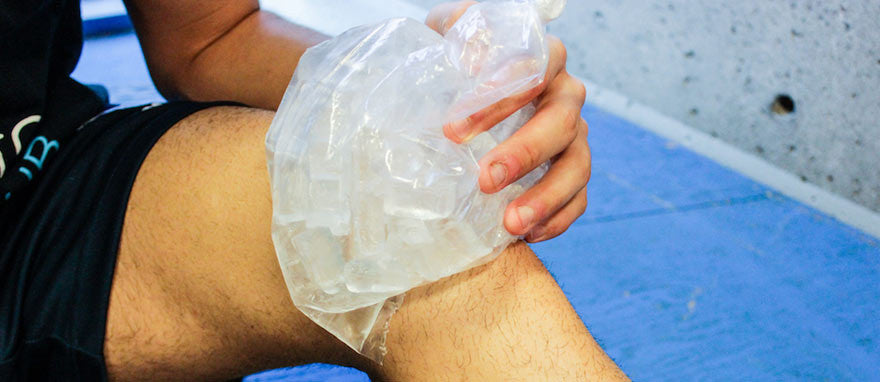 Apply cold therapy directly to the affected area to reduce swelling and relieve pain. ( Image Reference)
Apply cold therapy directly to the affected area to reduce swelling and relieve pain. ( Image Reference)
Contrast therapy may be applied solely to the affected area of the body in a variety of ways, such as:
Try an ice pack wrap to apply cold therapy and keep moving. This versatile wrap can be used almost anywhere and is an especially useful ice pack for back pain. Heating and cooling pads can be purchased in drugstores, supermarkets, pharmacies, or online. Click here to see our list of the absolute best ice packs for injuries.
It’s also easy to make your own hot and cold wraps or packs.
DIY Cooling PacksSoak towels in very warm/hot water.
Fill an old sock or pillowcase with white rice, and sew closed. This reusable bag can be heated in the microwave for 60 seconds before use. You’ll find more detailed instructions on making this heat pack here.
Heat massage stones in a slow cooker. This short video explains exactly how to do this safely.
Soak towels in cold water, and place them in the freezer for 15 minutes.
Fill a sealable plastic bag with ice.
Fill a sealable plastic bag with one part rubbing alcohol and three parts water, and then freeze.
Use a bag of frozen peas.
Our Recommendation:
Wraps and packs work best when alternating heat and ice for neck pain and injuries of the wrists, forearms, knees, face, and other smaller body parts.Focusing a stream of water from a faucet, shower head, or hose on the affected body part is another simple way to deliver contrast therapy.
You can also pour water from buckets or other containers directly on the area, but this means you will need to quickly refill the container each time.
Our Recommendation:
Pouring or spraying with a detachable shower head or hose can be carried out on any part of the body with relative ease. A faucet can be used to deliver contrast therapy to the hands, forearms, elbows, or feet.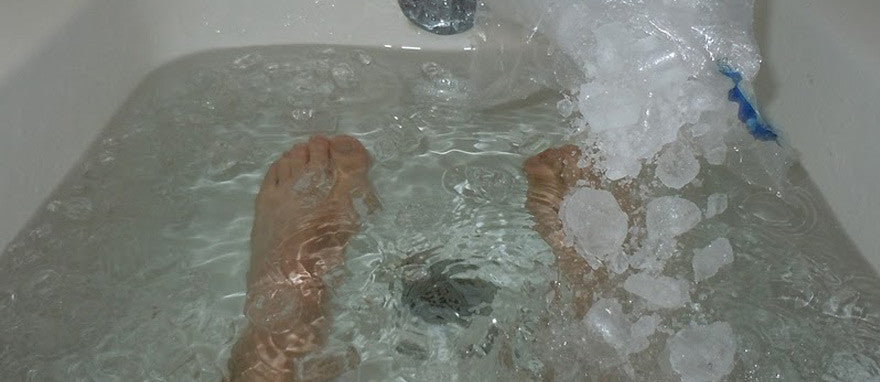 Soak your feet or hands in ice water to relieve pain and easily switch between hot and cold therapy. (Image Reference)
Soak your feet or hands in ice water to relieve pain and easily switch between hot and cold therapy. (Image Reference)
Immersing the injured area in a bucket, sink, or bathtub of hot or cold water is likely the best way to reap the benefits of hot and cold therapy.
Our Recommendation:
Although this method is extremely effective, it’s not practical for all body parts. Partial immersion is best used to treat the feet, lower legs, hands, wrists, or elbows. It's easy to use contrast therapy for sprained ankle treatment, but it would be pretty difficult to immerse your shoulder in a bucket of water!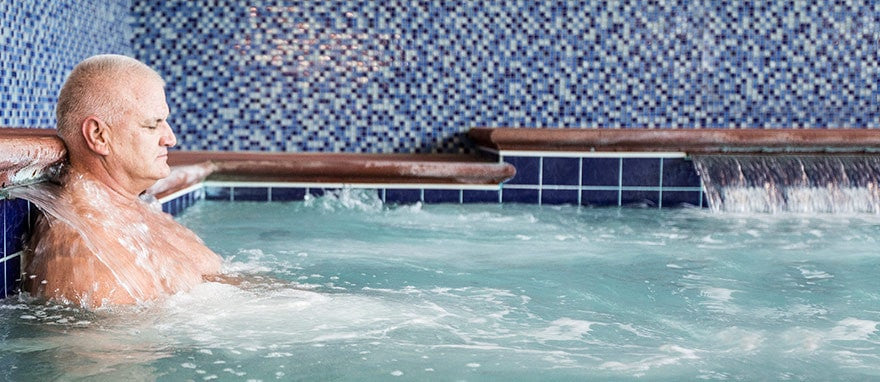 Ice baths prevent injury and speed recovery, but be careful and always speak to your doctor before using immersion contrast therapy. ( Image Reference )
Ice baths prevent injury and speed recovery, but be careful and always speak to your doctor before using immersion contrast therapy. ( Image Reference )
Also known as full body contrast therapy or a thermal workout, this involves soaking in a bath of ice or cold water and then switching to a tub of hot water, repeating the transition several times.
Obviously, this isn’t practical for most people—but this type of contrasting can also be done by moving back and forth between a pool and a sauna or hot tub.
However, these types of therapies can be tiring, dehydrating, and even dangerous, particularly if you are an older adult or have health conditions such as heart disease or blood pressure issues.
Therefore, it’s strongly recommended to stick to local applications when using hot and cold therapy. If you wish to try total immersion therapies, be sure to consult your doctor first.
Once you have decided on a method of contrast therapy, you should prepare your delivery methods of choice. You’ll also require a clock or stopwatch to time each application, although you don’t need to be too precise.
In general, it’s best to use a contrast therapy ratio of one minute of cold for every three to four minutes of heat. Repeat the alternation between hot and cold approximately three times.
Beginning and ending with ice is recommended to quell inflammation. Pain relief sprays and gels, such as Icy Hot, work according to concept—they cool first to dull the pain and then heat to relax the muscles.
Here is a basic pattern of how to apply contrast therapy:
Hot and cold therapy should be carried out one to two times per day until the injury has healed. If you’re not seeing improvements within two to three days, consult your doctor, as stronger treatments may be necessary.
While contrast therapy is pretty straightforward, the following tips and tricks will increase the effectiveness of this form of pain relief.
There are a ton of benefits to drinking water. Although the forms of contrast therapy recommended above are relatively gentle, there is the possibility that the quick temperature changes could lead to dehydration. Be sure to drink plenty of water before and after the treatment.
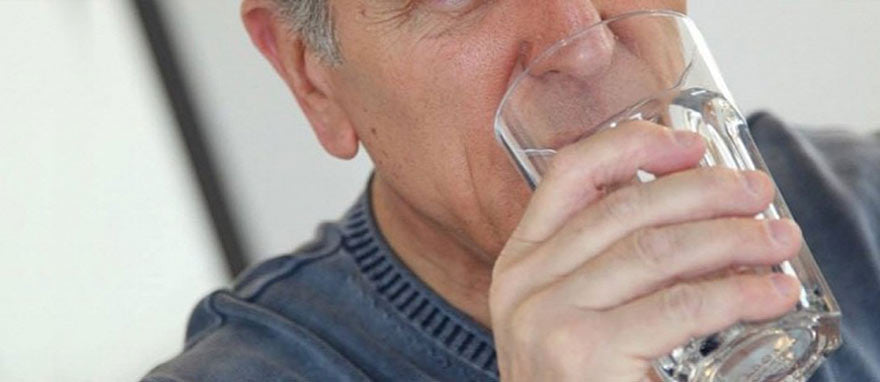 Staying hydrated is key to overall health and wellbeing, but it's especially crucial if you're taking advantage of contrast therapy. ( Image Reference )
Staying hydrated is key to overall health and wellbeing, but it's especially crucial if you're taking advantage of contrast therapy. ( Image Reference )
If using ice packs or wraps, add a layer of thin cloth between the pack and your skin to prevent burning.
If it’s possible with the delivery method you have chosen, and if you can comfortably tolerate it, slightly increase the intensity of the hot and cold therapies as you progress. (Make the hot slightly hotter and the cold slightly colder each time.) Naturally, this works better for pouring, spraying, and partial immersion than it does for packs and wraps.
If you want to stretch your muscles, or have been advised to do so, make sure to stretch during the hot stages of the therapy.
Not using enough heat is one of the most common mistakes during hot and cold therapy. If your chosen heating method isn’t delivering as much heat as it could—often the case with heating packs that cool quickly—consider heating the injured area for an additional minute or two.
Although we mentioned this point above, it needs to be emphasized! Never finish with heat, as it may exacerbate swelling and inflammation.
If contrast therapy causes you pain or anything more than slight discomfort, stop the treatment. You may be using temperatures that are too intense, or you may benefit from a different method of application, such as a pack or spray.
Often, the best way to apply treatment is by targeting the hot or cold sensation to just the area that needs it most. These smaller gel ice packs make it possible to get exactly the treatment you need with minimal risk of discomfort.
It’s normal for the pain to return several hours after using contrast therapy, especially in the early days of the treatment. In time, the pain should be less severe and slower to return.
Try self-massage techniques after applying heat to affected muscles.
Many people tout the health benefits of alternating between hot and cold in the shower, but does it really work?
It does—but it’s generally better for overall health rather than for treating an injury. This is because contrast therapy requires temperatures of a greater intensity to be beneficial, and these temperatures are often too intense for the entire body to tolerate.
Benefits of contrast showers for the body include:
However, to heal from injury or to alleviate aches and pains, other forms of contrast therapy should be used.
Hot and cold therapy used only on the affected areas, as opposed to whole body contrasting, is generally a safe and easy treatment to carry out at home.
However, there are some situations when contrast therapy is not recommended. Avoid it if you have:
Injuries that have occurred recently (within the last three days) should not be treated with heat or contrast therapy, due to the effect of heat on inflammation. Ice is best in the days after injury, after which time contrast therapy can be used.
The therapy may cause bleeding or increase the risk of infection in those with burns, boils, cysts, cuts, scrapes, or sunburn.
Those with low blood pressure, poor circulation, or heart conditions may react adversely to extreme heat or cold.
With this condition, hives form on the skin after exposure to cold temperatures.
Heat application may not be suitable for those who are already feeling warm due to fever or infection.
Since it can be difficult to feel pain with this condition, you may not be aware if you are burning your skin with ice or heat.
Cold treatments would adversely affect this condition, which is characterized by constricted blood vessels in colder temperatures.
The above list of medical conditions is by no means exhaustive, so it is important to consult your doctor prior to using hot and cold therapy to discuss if it is right for you. Some people may be advised to combine this therapy with medication and exercises to bring about greater pain relief.
If your doctor gives you the go-ahead, the main concern around contrast therapy is the risk of burning yourself. It’s important to only use hot and cold temperatures that you can tolerate.
While the skin may turn bright red due to warm or cold temperatures, a dark red color indicates the skin is being burned.
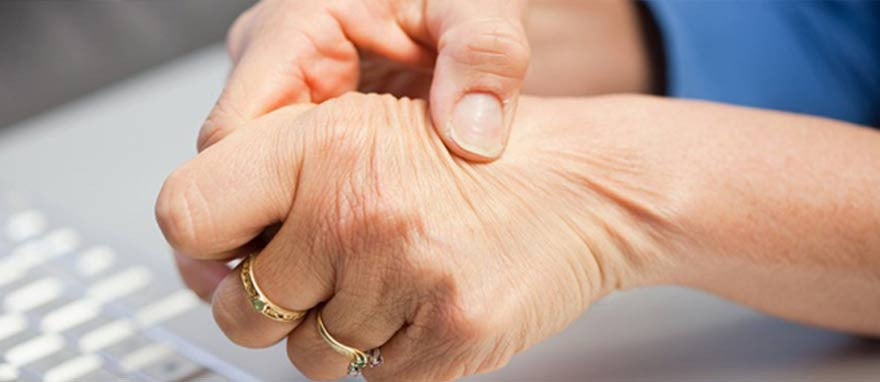 Contrast therapy will relieve pain and swelling associated with a variety of injuries. It's most effective to treat pain in the hands and lower body. ( Image Reference )
Contrast therapy will relieve pain and swelling associated with a variety of injuries. It's most effective to treat pain in the hands and lower body. ( Image Reference )
This versatile treatment can be used for a variety of conditions, including:
Chronic lower back pain may or may not respond to contrast therapy—many sufferers find they enjoy greater relief from all-day heat wraps.
Although the hip joint causes problems for many, it is not usually the best candidate for contrast therapy due to its size and the fact that it is often padded with fat. However, given the simplicity and cost effectiveness of hot and cold therapy, it’s worth trying contrast therapy for many conditions that cause pain.
Many athletes are known to take ice baths after training to lower inflammation, improve circulation, and reduce lactic acid build-up.
Hot and cold therapy may be effective in aiding recovery by reducing levels of both lactic acid and muscle soreness.
It may be particularly beneficial for those who have a second workout planned for later in the day, as it doesn’t shut the body down in the way pure ice therapy does.
However, for most people, contrast therapy and ice therapy aren’t necessary post-workout treatments—they’re better saved for injury recovery.
Alternating hot and cold therapy offers benefits above and beyond ice or heat alone, although it’s important to avoid this treatment if you have an acute injury or certain medical conditions. For most people, contrast therapy offers an easy and cheap way to lower inflammation, loosen muscles, and enjoy natural pain relief.
Perseverance is key to effective contrast therapy. If you’re seeing benefits, keep up the treatments until you are fully healed.
Leave a comment